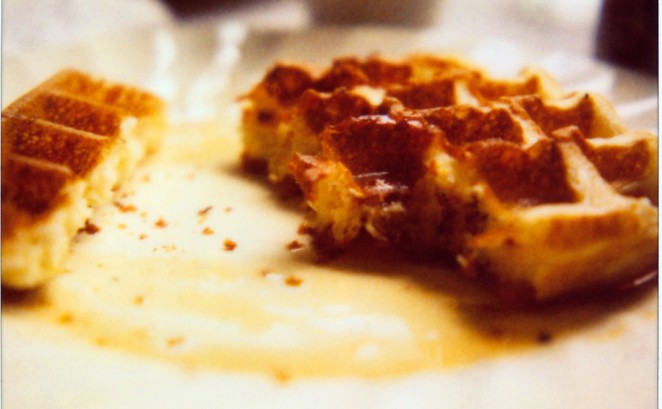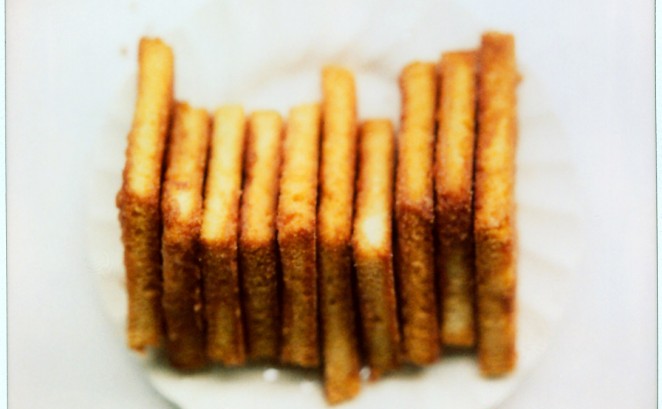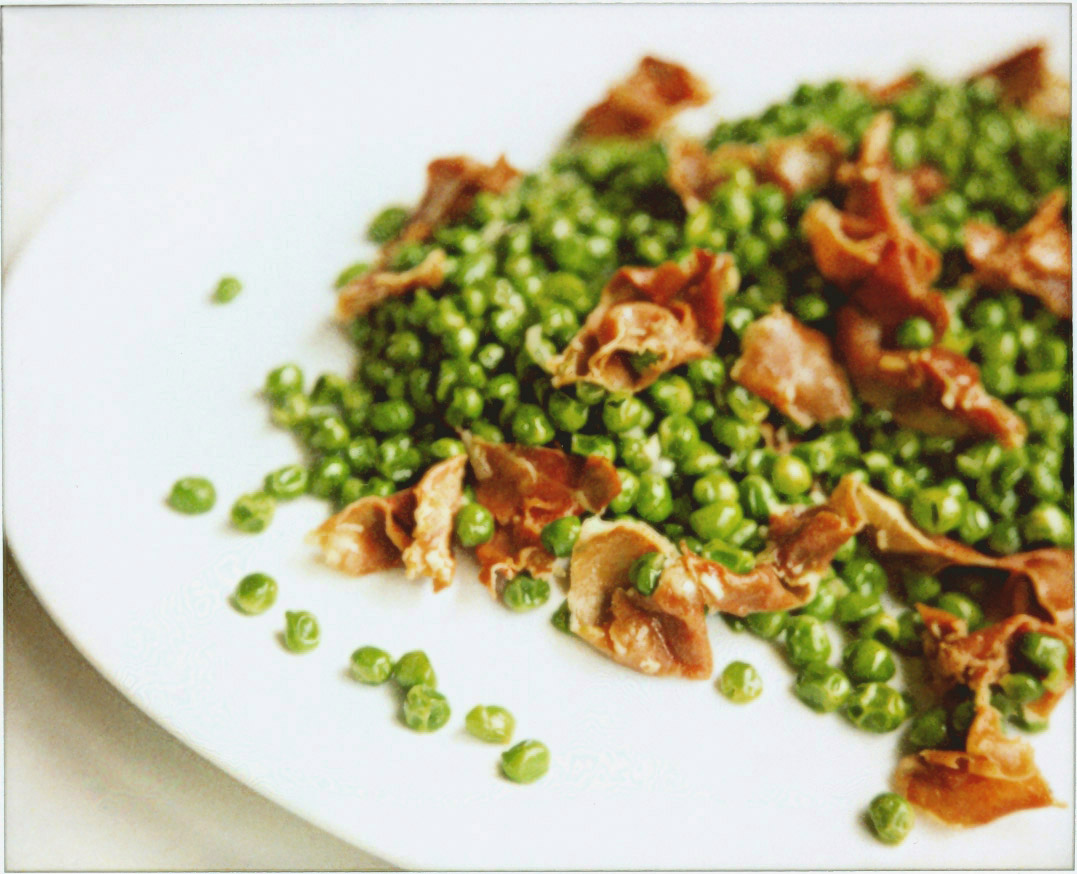Month: May 2010
Peas without apology
Last weekend, over the course of 24 hours, I ate almost a pound of peas. I’ve done crazier things in my life, but not many.
I would like to tell you that I bought my peas at the farmers’ market, and that I shucked each one by hand, and that it was a true, starry-eyed labor of love, pod after pod after pod after pod, because it’s spring, and people are supposed to eat fresh peas in spring. But I haven’t seen any peas at our market, and I didn’t feel like waiting, so I bought a one-pound bag in the freezer aisle at the grocery store. I totally cheated, and I am not sorry. I needed some peas.
Maybe you hate peas, or maybe you tolerate them, or maybe you like them enough to feel like crying if you don’t consume a large quantity of them between the months of March and June. I’m willing to go out on a limb and say that, whoever you are, you should try a little dish called peas with prosciutto, preferably the recipe from Italian Easy, by Rose Gray and Ruth Rogers. Italians have a way with peas, which is to say: they cook them for a long time. Stay with me here. Go get some peas, and then cook them slowly in butter and scallions and garlic, until they go almost olive green. Then top them with prosciutto and let the whole thing hang out for five minutes or so, until the prosciutto twists and curls in the heat, letting loose its salt and fat and flavor and funk. What you’ll have then are some serious peas, some gutsy peas, peas without apology.
Until recently, I was under the impression that peas were to be cooked very little, if at all. It would have never occurred to me to use the words “pea” and “olive green” in the same sentence, except in the context of something deeply regrettable. My grandparents’ generation cooked the daylights out of its peas (and pretty much everything else), and we learned our lesson. Our peas were to be bright green, and when you closed your teeth around one, it was supposed to give way with a small, cheerful pop. But then I met my friend Francis, who has great respect for the olive green pea. He reminded me that peas are legumes. They’re like young beans, basically. When they’re newly picked, they’re filled with sugar, but as they age – which they do with great speed – those sugars turn to starch. As with other legumes, if you want them to be sweet and tender and not starchy, you’ve got to cook them until they taste sweet and tender and not starchy, and that can take a while. Francis says it a lot better that I can, but basically, unless you’ve got some very fresh specimens on your hands, you would do well to give them a thorough cooking.
That said, frozen peas are a special case. You can go either way with them. Because they’re frozen quickly after picking and processing, they’re generally fairly sweet, without a ton of starch. I’m happy to eat them pretty much any way they’re cooked, or even not cooked at all. But when I tried cooking them long and slow, longer than I ever had before, I found something totally new. At first, early on in the cooking, the peas tasted good: clean and mildly sweet, with a snappy skin and a tender center. But as they kept cooking, the flavor went deeper, into a different dimension of sweetness, one that’s lower, closer to the soil. The skin started to wrinkle, and the inside got creamy, and though there was nothing mushy about it, the whole thing sort of melted between my teeth. The key is to taste as you go, and to stop cooking at the perfect midpoint between crunch and mush. You’re not trying to cook the crap out of them, but close. It doesn’t take long – just 15 minutes or so – but it’s a lot longer than most of us are accustomed to. Your hand will probably start itching to turn off the stove around the three-minute mark, but hold steady. Be strong. Be Italian, for approximately 15 minutes. You won’t be sorry.
Peas and Prosciutto
Adapted from Italian Easy: Recipes from the London River Café, by Rose Gray and Ruth Rogers
The original version of this recipe calls for fresh peas, but I used frozen instead. If you choose to use frozen, I recommend buying the kind labeled “petite peas,” which tend to be smaller and sweeter. If you think of it, try to defrost them slightly before using them here. But if not, just bang the bag around on the counter to break up any big clumps.
Melt about half of the butter in a large skillet over medium heat. Add the onion and garlic, and cook slowly to soften. Do not allow to brown. Add the peas, stir to combine, and then add the remaining butter. Season lightly with salt and pepper. Cook, stirring occasionally, until the peas are tender and sweet, about 10 minutes. Add the prosciutto, and stir to mix. Then turn off the heat, cover the skillet, and allow to sit for 5 minutes. Taste, and season as needed.
Serve warm.
Yield: about 4 side-dish servings
You deserve a waffle

World, we have a winning waffle. You people are outstanding. You really know your waffles. Thank you. I should ask you for advice more often, because together, you’re absolutely unstoppable. I’m pretty sure that, given a day or two, you could solve any problem, and if I may, I would like to suggest that you start with my pet conundrum: how to make potatoes come out of the ground already fried. I think a lot of us would like to know. Anyway, I read your suggestions, every single one of them, and after much hemming and hawing and hand-wringing, I chose two to try. It wasn’t easy, and my thinking went something like this: Yeasted waffles got the most votes,…
Read moreA quick couple
Hi. I wanted to say a quick couple of things. First, a last-minute reminder for my neighbors in Ballard and the other good people of Seattle and the surrounding area: I’m giving a talk and reading tonight, May 10, at the Ballard Library. It’s free and open to the public, and it starts at 6:30 pm. (In case you’re confused, not to worry: this is the event that was originally scheduled for April 18 and had to be postponed.) Secret Garden Bookshop will be there to sell books, and miracle of miracles, I’ve even convinced Brandon to come and listen, though he has to listen to me talk every single day and it’s his night off and he would rather…
Read moreHer recipe box

Well. That was not at all what I planned for the month of April. So long, April. So long, plans. I want to get this show back on the road. I’ve missed being here, and I’ve missed you. But before we go any further, I want to offer a long overdue thank you to those who came to my readings last month. I thought I had a great time on my first tour, but somehow, I had an even better time this year, despite the fact that I was dealing with a whopping case of laryngitis and could hardly speak. I hope you could hear me, and that you enjoyed it. It made me so happy to meet you. I’ll…
Read more

